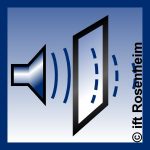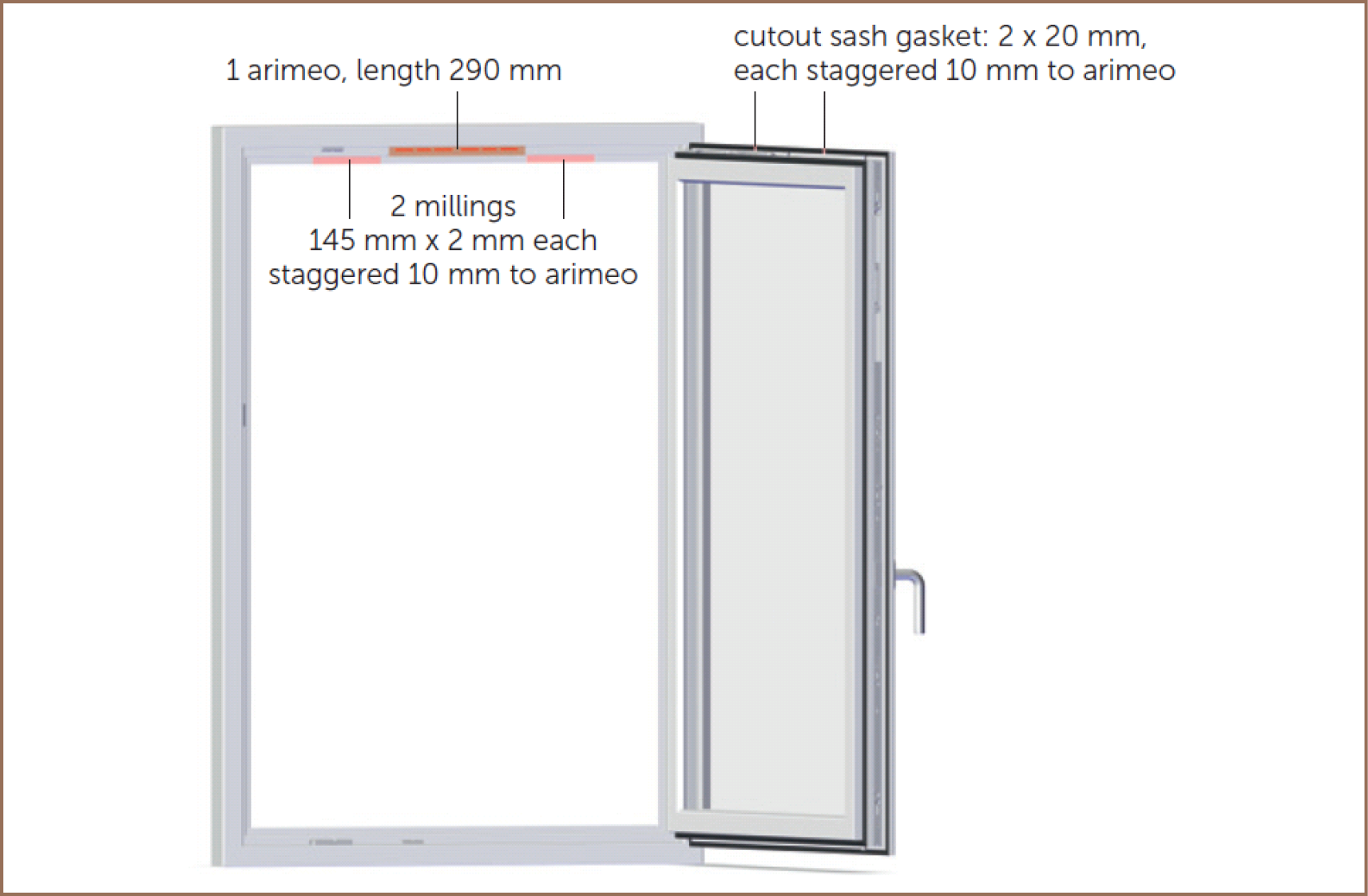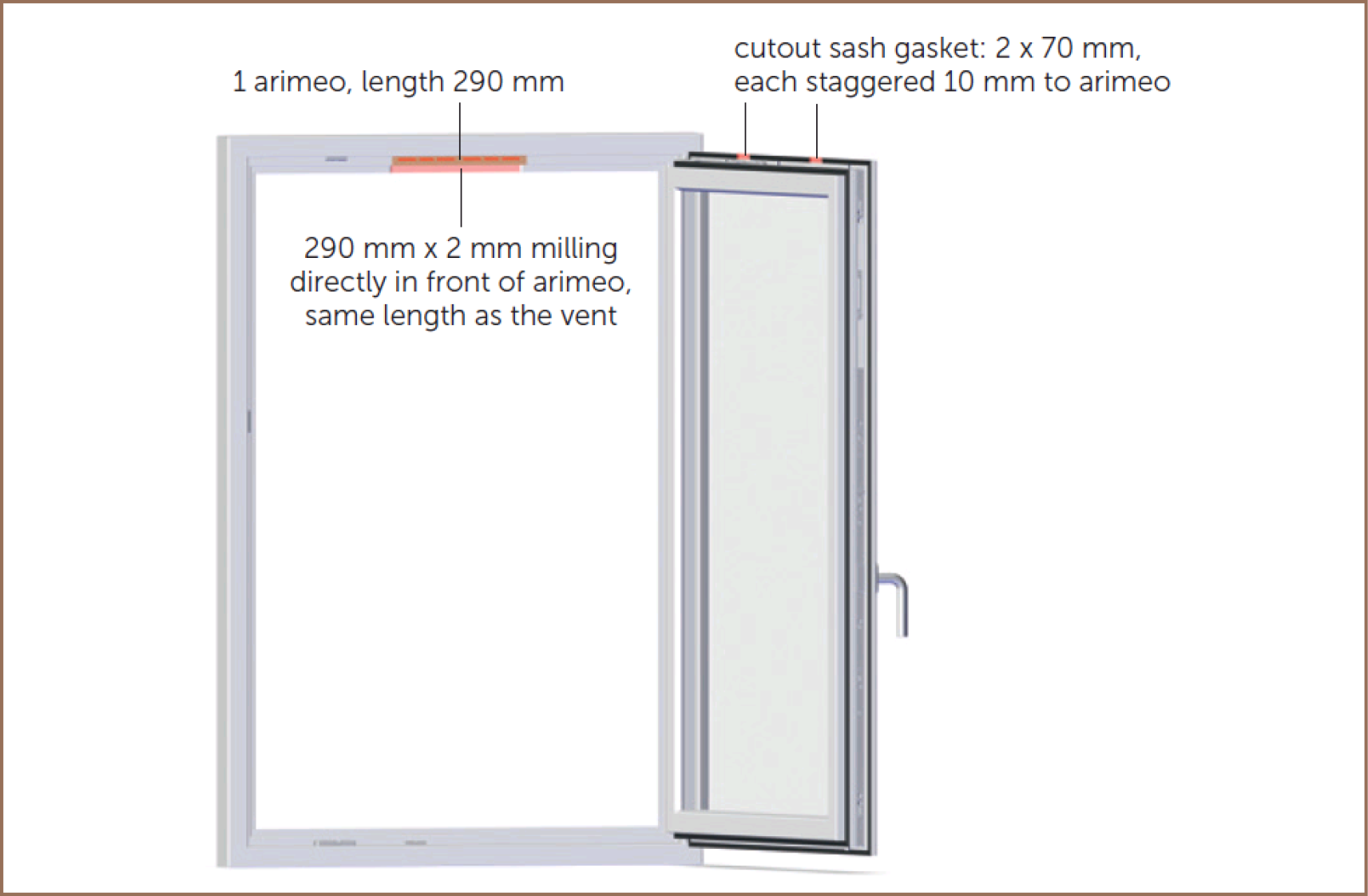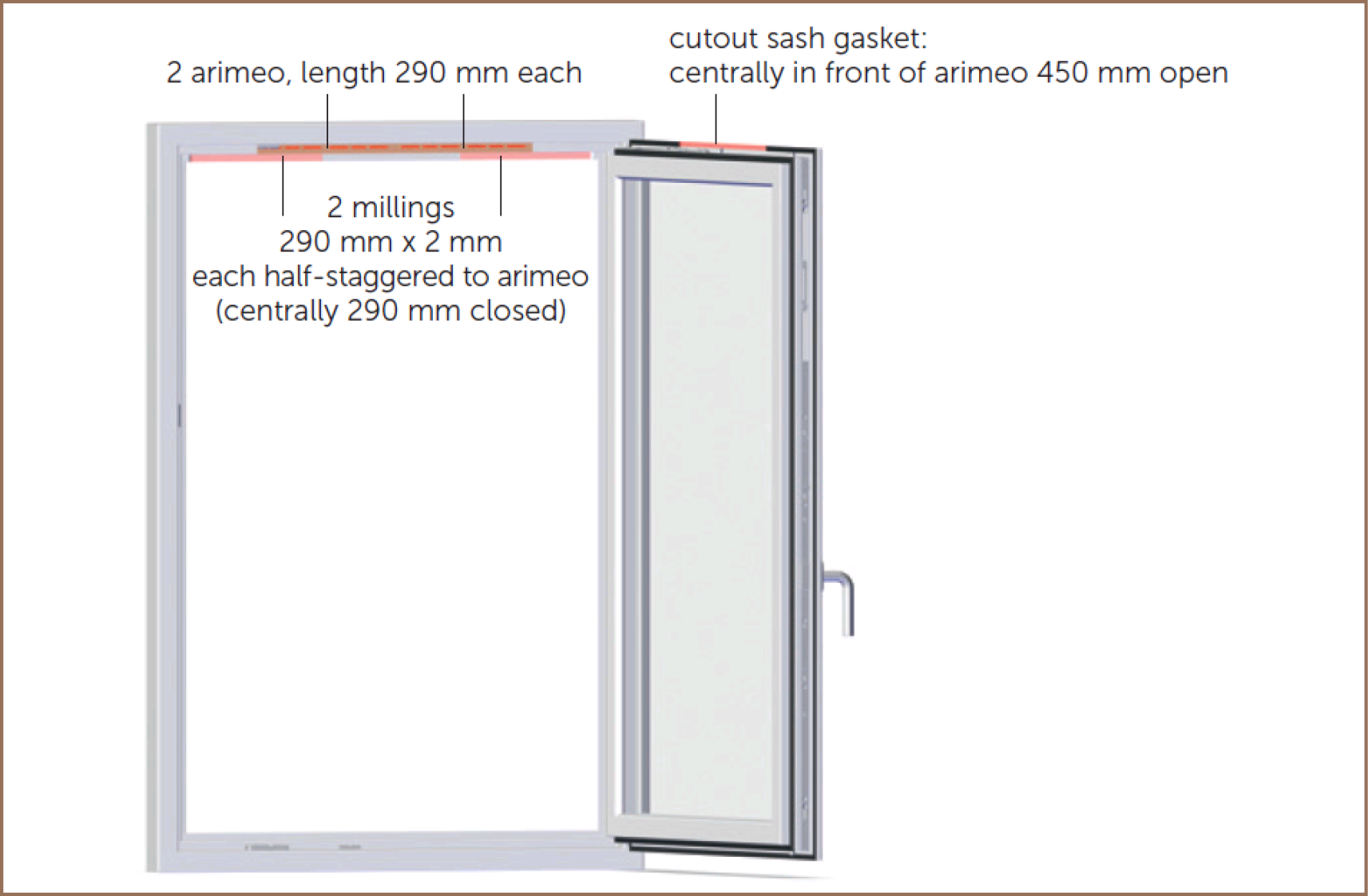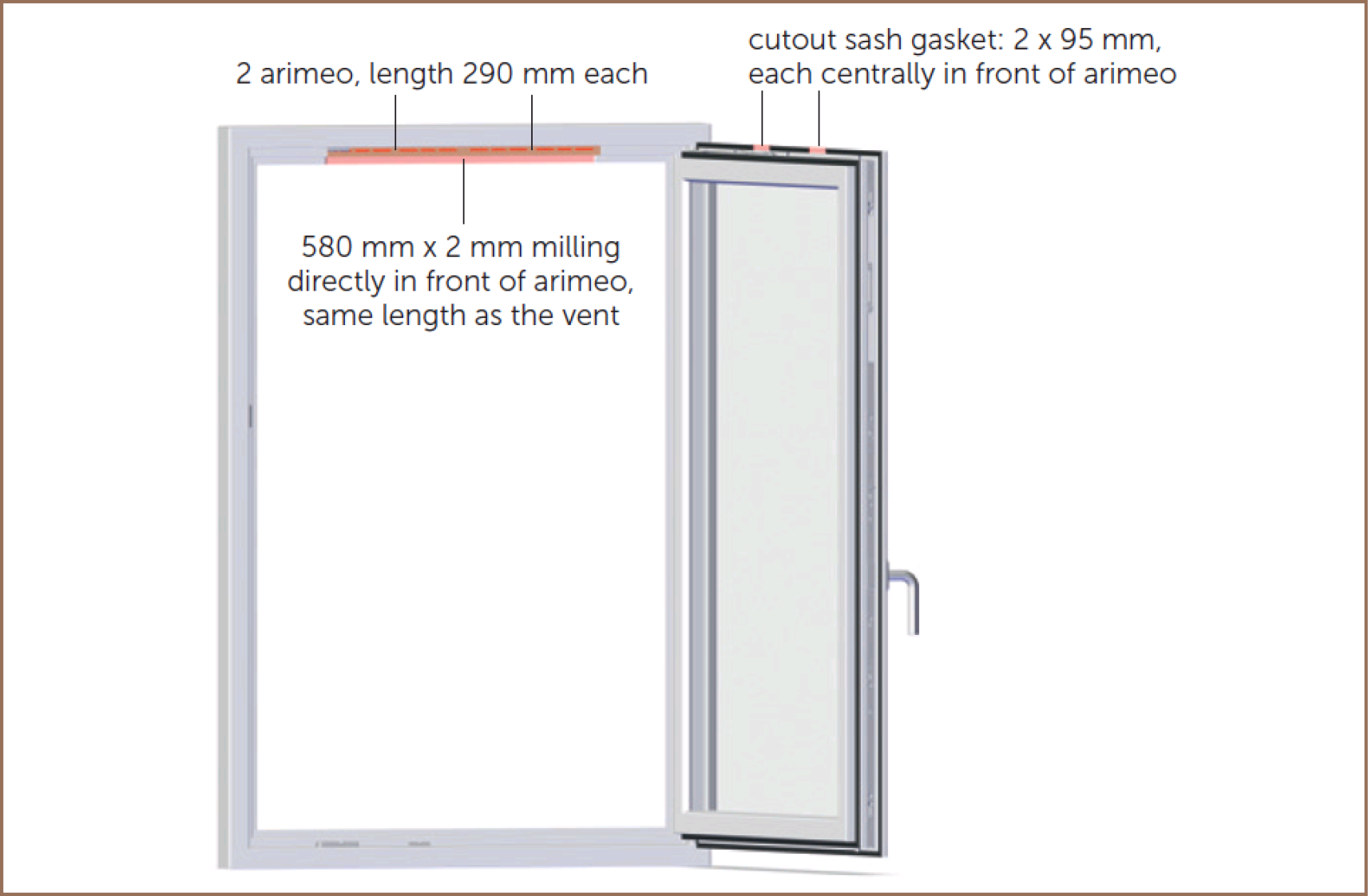arimeo classic T für timber windows
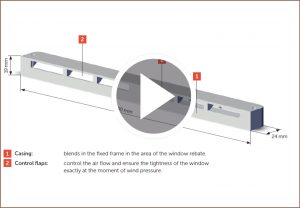 arimeo classic T is a window rebate vent for timber windows. It can be used in all current systems with stepped rebate from IV 68 on, to ensure air change when windows are closed. arimeo classic T is positioned in the frame and adapts the contour and colour of the frame. Thus, it stays almost invisible, even when the window is open.
arimeo classic T is a window rebate vent for timber windows. It can be used in all current systems with stepped rebate from IV 68 on, to ensure air change when windows are closed. arimeo classic T is positioned in the frame and adapts the contour and colour of the frame. Thus, it stays almost invisible, even when the window is open.
- cross ventilation
- as a pure fresh air supply device in combination with exhaust air fans
- as a combustion air supply device for room air-dependent gas hot water heaters or wood-burning stoves
How it works
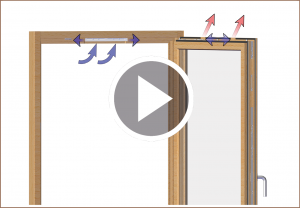 The ventilation duct is realized through the window rebate exclusively, i.e. the space between the sash and the fixed frame. To achieve this, a milling of 2 mm is made in the fixed frame overlap to ensure air entrance. Hence, air can flow to the inside of the room by passing arimeo classic T and its control flaps. To ensure this air flow to the inside of the room, the sash overlap gasket is cut out at various points. The air flow described can arise bidirectionally, depending on the pressure difference.
The ventilation duct is realized through the window rebate exclusively, i.e. the space between the sash and the fixed frame. To achieve this, a milling of 2 mm is made in the fixed frame overlap to ensure air entrance. Hence, air can flow to the inside of the room by passing arimeo classic T and its control flaps. To ensure this air flow to the inside of the room, the sash overlap gasket is cut out at various points. The air flow described can arise bidirectionally, depending on the pressure difference.
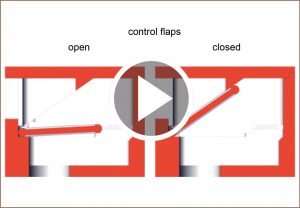 In this air change sequence, arimeo is the regulating element in the window rebate. Thanks to the precise swivel joint technology of the control flaps, a sensitive air flow control is realized responding to the slightest movement of air. The control flaps of the arimeo classic T restrict the air flow with a high-sealing effect in case of high wind forces and thus, prevent draughts and waste of energy.
In this air change sequence, arimeo is the regulating element in the window rebate. Thanks to the precise swivel joint technology of the control flaps, a sensitive air flow control is realized responding to the slightest movement of air. The control flaps of the arimeo classic T restrict the air flow with a high-sealing effect in case of high wind forces and thus, prevent draughts and waste of energy.
Installation
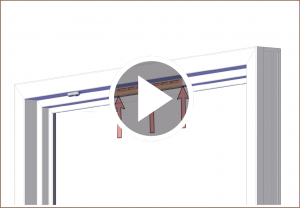 arimeo classic T is installed in the upper fixed frame by milling out the installation space for arimeo and the outer air supply gap in the rebate. The inner air supply gap is ensured by removing the inner sash overlap gasket at defined positions in the upper area.
arimeo classic T is installed in the upper fixed frame by milling out the installation space for arimeo and the outer air supply gap in the rebate. The inner air supply gap is ensured by removing the inner sash overlap gasket at defined positions in the upper area.
The number of arimeo classic T and the installation variant depends on the volume of air required. For timber windows, the arimeo classic T can be used in the installation variants shown below.
Performance data arimeo CT in timber windows
arimeo classic T is an ift-tested product. The performance data can be reviewed in the following overviews…
overview ventilation characteristics arimeo CT overview sound insulation arimeo CT
…respectively in the following test evidences of performance data, which, in addition, are accessible on the ift-tested-website of ift Rosenheim. Log-in data with respective ID is stated in the ift-icon below.
The following are the tested installation variants of arimeo classic T in timber windows.
Compatible window systems
arimeo classic T can be installed in new windows in the window factory and it can be retrofitted in existing windows. It can be used in all current systems with stepped rebate from IV 68 on.
Text for tender
arimeo classic T for timber windows
Decentral window rebate vent for timber windows with exclusively automatic flow rate control through control flaps and installation in the upper fixed frame regardless of window hardware. Concealed installation in the window rebate. Milling of window rebate required. Mounting of the vent with 3 screws.
Vent is invisible when the window is closed. There are no elements that need to be operated and no visible vent elements attached additionally.
The following certificates issued by notified testing bodies must be presented:
- air permeability including air flow rate characteristic curve according to DIN EN 13141-1
- watertightness according to DIN EN 12208 in association with DIN EN 1027
- sound reduction value Rw according to EN ISO 10140-2, assessed according to EN ISO 717-1
quantity:____________________
unit:____________________
unit price:_______________________
Total price:_______________________






